|
|
Trip Report |
|---|---|
|
|
18.71040°N / 73.47578°E |
|
|
Jul 23, 2018 |
|
|
Hiking |
|
|
Fall |
Lohagad - The Iron Fort
Aashadhi ekadashi was a holiday for Yuvaan and I wasn’t well for the past couple of days with a throat infection. I had lost my voice for the past few days, however I was recovering, and fortunately there was a holiday - so I decided to take a one-day break and take Yuvaan to a small trek nearby.
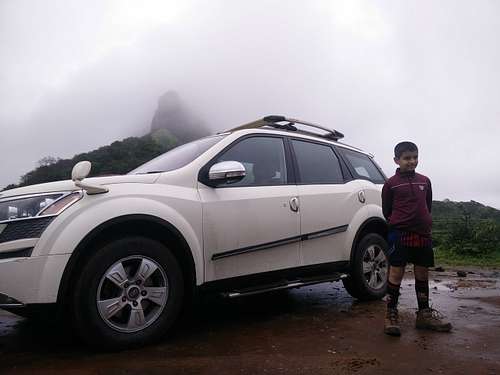
Lohagad is a fort which one can see from the Pune - Mumbai expressway. It is actually a twin-fort, with Visapur on one side of the col and Lohagad on one side. We always see it while going to Mumbai and I am reminded of the time when I had climbed it with Mahadik once, and with Rucha and her friends once. She had a few friends visiting from Delhi, and wanted to go for a trek. I and Mahadik had taken them to Lohagad, and we had had a lot of fun. One of Rucha’s friends had lost a shoe in one of the waterfalls. It was a fun time during those days, when one had to board a local train, and get down at Malavli station, and walk all the way from the station to the top of the fort, and back.
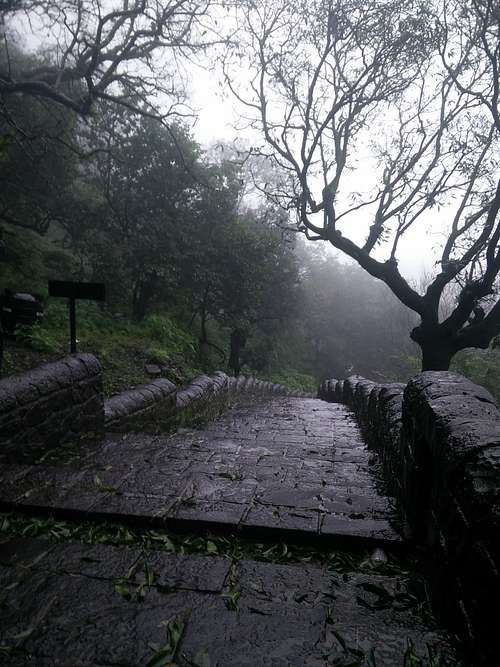
The trail wound through the Bhaaja caves, and went on to the col from where it was a forested path all the way to the top.
Lohagad has its importance in history for two reasons - one - as “Loha” in Hindi means Iron, which tells us that the fort was as solidly constructed as iron! It was almost impenetrable for the enemy forces to attack it and enter it. This can certainly be verified by the multi-layer bastions that fort boasts of, with none of them having more than 10 feet of space for the enemy or their elephants to gather and break open the door.
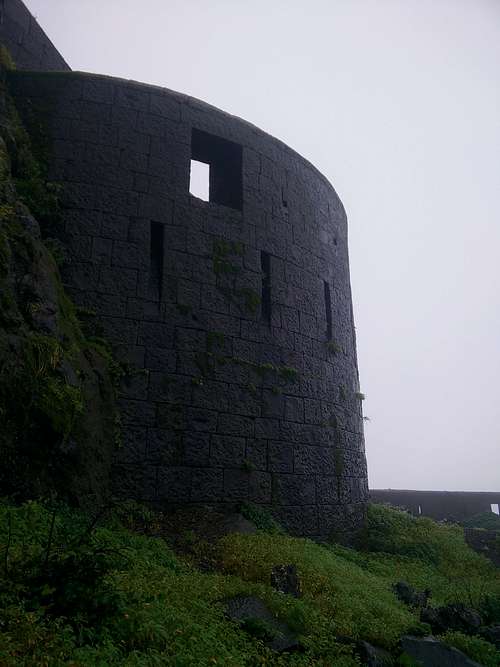
Second, this was the fort where Shivaji Maharaj kept the entire loot, which was brought to Maharashtra, from Surat. The loot of Surat in Gujarat has a lot of importance in Shivaji’s time, which enabled him to raise more forces and army, to resist the ever-invading Mughals who harbored a dream of capturing the entire Maharashtra. I and Yuvaan actually sat down and had lunch in the dry Laxmi-Kothi, where the gold was kept at that time - around 400 years ago!
So, we took the old Pune - Mumbai highway towards the village of Karla, where there exist Buddhist caves. If we would’ve taken the local, then we would’ve gotten down at Malavli station. However, now, we take a detour from the old highway, and go over the expressway, to reach closer to Lohagad.
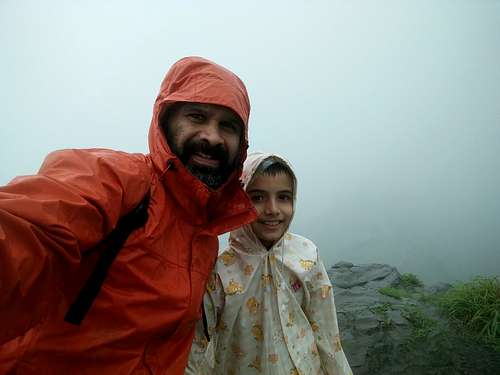
Now, when I was told of the road being built till the col, I was disappointed with the development, as I know one thing for sure - wherever a road goes - the location gets screwed up, as typical tourists don’t have the decency to NOT spoil the place by NOT throwing garbage everywhere, as and when they feel like throwing.
A look at the cars going up the ghat (hilly terrain road) section, and I was a little sceptical.
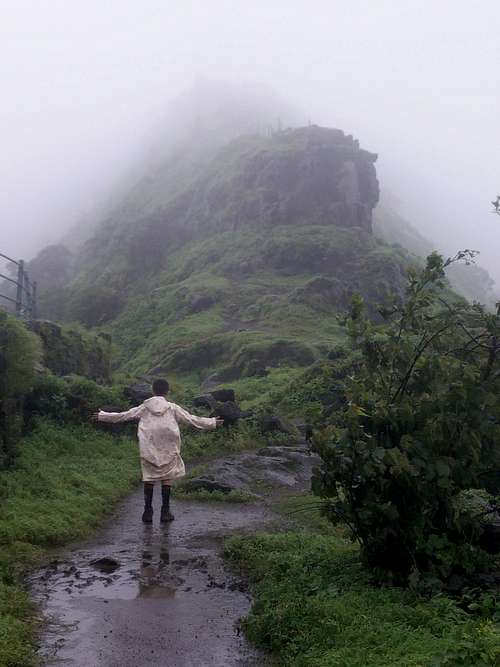
We had a strong car, but small cars were also going up. The road was a treacherous one, with hairpin turns of 180 degrees which were very steep! In fact, at one of the turns, one of the cars in front of us stopped, and couldn’t go forward.
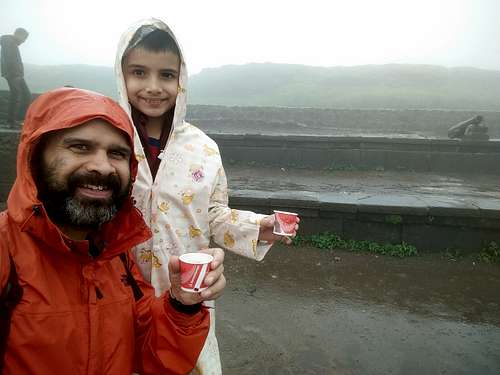
It was loaded with a group of boys, and the car - although a strong one (Scorpio), couldn’t take the load. I had to reverse my car a little bit, to make space for that car to back up. Once we were through the treacherous section, Yuvaan asked - we have to go back the same way, right? He seemed a bit scared as what would happen if another car comes up right in front of us? I assured him that I should be able to handle it, and he need not worry.
Once we reached the col, we parked our car and got out to get dressed in rainwear. We started walking up the remaining part of the road, when it started raining heavily. I was pretty much drenched to the bone, and Yuvaan was also entirely wet in his shoes. We both took the steps leading up to Lohagad entrance. After about 15 minutes if hike, we reached Ganesh Darwaza, the first of the many doors that one encounters at Lohagad. Yuvaan was amazed by the still solid construction of the fort, with so many doors still intact.
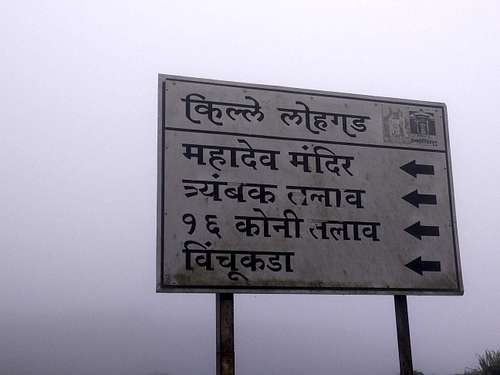
We got a chance to go on all the bastions, to check out the view of the fort, followed by exploring a few hidden rooms here and there. Multiple trekking groups had embarked on a mission to collect loose cannons which were found in the nearby forests, which they had collected and kept at one of the gates, for all to see how fights were led during those times.
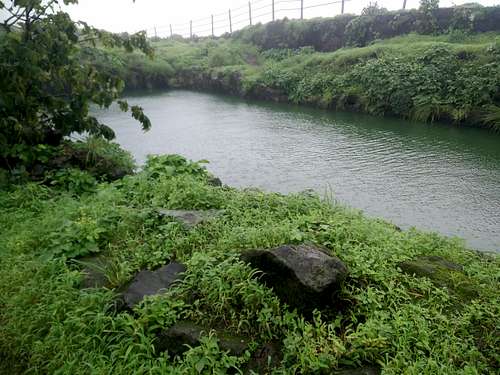
After going through a few of those gates, we arrived on top of the fort, where a big mosque welcomes you. The silhouette of the mosque in the clouds, with heavy winds and incessant rains makes you wonder - how long in time has this mosque stood here? What all events in history must this mosque have witnessed? It was amazing that a structure like that has stood the test of time.
There was a guy selling tea to everybody in that cold weather.
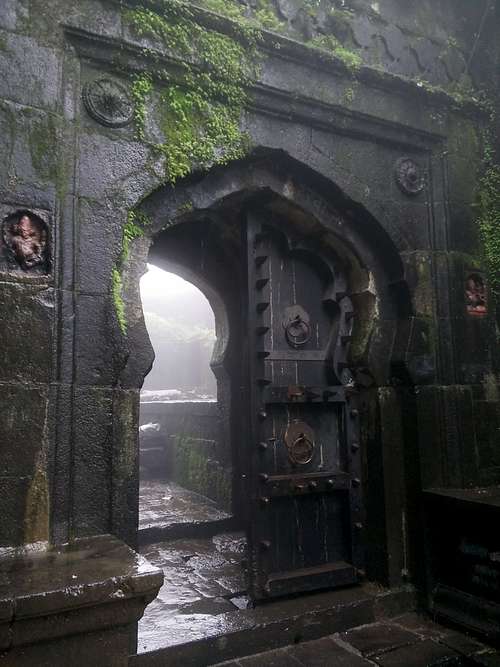
A warm cup of tea was a welcome drink for me and Yuvaan. It warmed us up, even though we both were drenched in cold water from the rains. We went ahead and looked at the Shiv Mandir, besides which there is a 8-cornered water tank, which was apparently built by Nana Phadnavis, one of the legal advisors to Shivaji Maharaj. As we had wet shoes, we didn’t take them off to go and take a darshan of the deity inside. I wanted to show Yuvaan Vinchu-Kada, something similar Takmak Tok, the cliff on Raigad, from where people accused of crimes were pushed off. Vinchu kada happens to be the last point on the fort, where very few people go. And, one has to climb down from the main fort to reach this bastion. I asked Yuvaan whether he wants to go, and he enthusiastically agreed! So, we took the trail which nobody had taken. At a point where we could see the trail below, there was a board which said - deep valley ahead, do not go. I told Yuvaan that this was from where I and Mahadik kaka had descended to Vinchu kada the last time we had visited here. We saw that there was another route that was going down the side of the mountain, so we decided to take that. It had been secured by placing appropriate protection, i.e. railings, which one could hold on to, to go ahead. We safely and cautiously descended, and saw another group coming up. They warned us that at one point, the railing had broken, and we should be careful, especially with the kid. We carefully walked on the trail, which had gotten slippery, but we were confident of our stepping. In no time, we crossed the no-railing patch, and we were on our way to Vinchu-Kada. A walk of about 25 minutes from there, and we were standing on the outermost bastion of the fort! While going there, Yuvaan did mention once or twice that we are the only ones here. I nodded, and understood that he must be a little scared, but I told him that as I was there - there was nothing to worry about. He got a dose of confidence, and we walked all the way out.
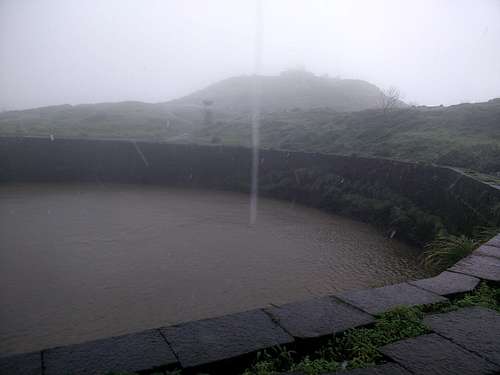
On the bastion, we could see a small door going down, which I am sure must be used by people at those times. However, Yuvaan was not very keen on going there. So, we stood on the bastion, and it was so windy that I had to literally hold on to him, as I feared he may get pushed due to the heavy winds. We took a few pictures, and saw the scenery unfold in front of our own eyes, where the clouds played hide and seek with the green plateau that lay in front of us. It was an amazing experience witnessing the play of clouds and light. After a few minutes and few snaps, we decided to return back. On our way back, we saw the cliff that I and Mahadik had descended years ago! It wasn’t scary, but it wasn’t easy either.
Once on top of the mountain again, we decided to take a break and have our lunch.
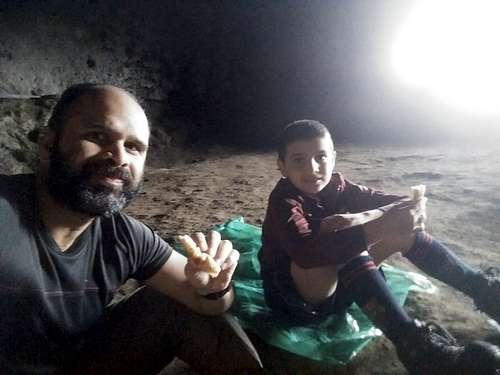
So, we went and sat in the Laxmi Kothi, which is where the gold from the Surat loot was kept. Here, we met an archeological survey of India officer, who recited interesting anecdotes from those times, and we felt as if the history is unfolding in front of our eyes. We had a good lunch with interesting conversations, during which I asked him about the HUGE Hatti-Talaav (where elephants used to take a bath), hence the name - elephant pond. This is a 16-cornered pool where there are multiple steps carved out in the stone for people to descend. It was filled with water, and again it was so windy that I had to hold on to Yuvaan, so that he doesn’t get pushed off into the pond. I was telling him about this pond since the time we climbed this fort, however - due to the bad sight, we weren’t able to locate it. But the directions given by the ASI gentleman, we were witnessing one of the biggest ponds that one could create on top of a mountain!
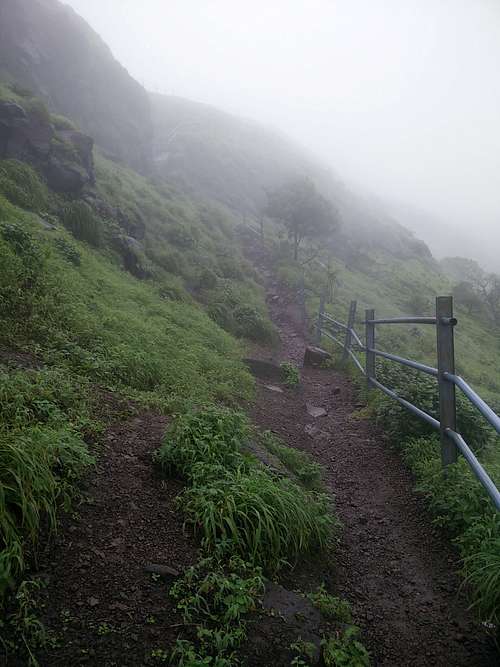
After having seen everything, on our way back - I showed Yuvaan a staircase which was going down from one of the bastions, where I thought - it would’ve been a secret passage down the fort. When I visited last, it was covered with a huge stone, in a manner that seemed deliberate, as if somebody doesn’t want this to be discovered. However, it was no longer covered, and I and Yuvaan entered.
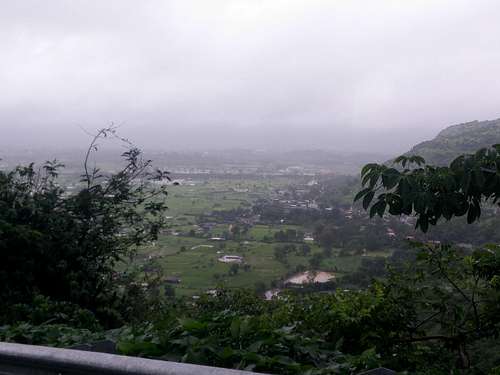
We found it to be a room - a secret room, which probably was built for soldiers to hide, in case enemy attacks. Yuvaan was utterly thrilled by the experience of seeing a fort, which was still quite intact, instead of the ruins that one sees on other forts.
We descended the fort immediately, as we had to return to Pune. As it was almost a 7-km trek, Yuvaan suggested we skip Visapur, which was the other fort we had intended to see. I agreed, as it would get dark then. So, we got back to our car, changed into dry clothes, descended the tricky ghat section - and were on our way home in no time.
All in all - it was a great experience!

